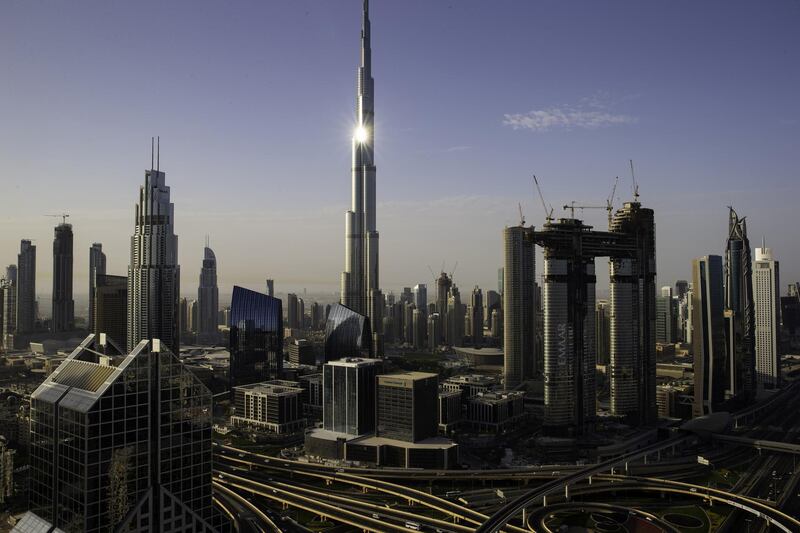The UAE is expected to swing to a fiscal surplus this year and next as higher-than-expected oil prices offset an uptick in government spending aimed at propelling non-oil gross domestic product growth, the International Monetary Fund’s country mission chief said.
The government is forecast to post a surplus of about 0.5 per cent of GDP in 2018, from the IMF's previous fiscal deficit estimate of 2.2 per cent, "largely because of the increase in oil prices that are projected for this year and also oil prices are expected to be higher than earlier in 2019,” said Natalia Tamirisa. “Over the medium term they are going to come down below $60 per barrel.”
The Washington-based lender is projecting a fiscal surplus of 1 per cent of GDP in 2019.
The UAE is boosting spending this year to help spur non-oil growth. Oil GDP had stagnated as a result of compliance of Opec members with global oil output curbs introduced in January last year and extended to the end of 2018. The Emirates and other Arabian Gulf countries swung to deficits in the last three years following the plunge of oil prices from the mid-2014 high of $115 a barrel to less than $30 a barrel in 2016. However, global oil cuts and geopolitical tensions have helped shore up Brent prices, which reached $78 a barrel last week, which will help Gulf countries narrow fiscal deficits or post surpluses.
Higher oil prices and non-oil growth fuelled by increased government spending are also expected to help boost UAE growth to 2 per cent in 2018 and 3.6 per cent 2019, compared with an estimated growth of less than 1 per cent 2017, according to IMF estimates. Non-oil GDP grew less than 3 per cent last year, while oil GDP declined by 2.8 per cent.
________________
Read more:
[ IMF encourages Egypt to deepen economic reforms, pursue job creation ]
[ As Lebanon heads to polls IMF regional chief calls for fiscal discipline ]
________________
Next year, the phasing out of the global oil output cuts will help raise oil GDP to 3 per cent compared with zero this year, while growth of the non-oil economy will rise above 3 per cent this year and close to 4 per cent next year.
Dubai is increasing expenditure in the run-up to Expo 2020, while Abu Dhabi is boosting public spending after few years of austerity aimed at narrowing the fiscal deficit. Risks to overall growth in the UAE include geopolitical tensions, faster than expected increase in global interest rates, and a weak domestic property market, she said.
The UAE is taking a series of measures to help ride through the wave of oil prices lower than the mid-2014 levels and protect its economy from various risks.
These steps include revenue-raising measures that have helped tame the fiscal deficit from removing fuel subsidies in 2015 to introducing excise tax on tobacco, and energy and fizzy drinks last year and 5 per cent VAT in January this year.
Although the inflation rate spiked in January to a three-year high of 4.8 per cent because of the introduction of VAT, it has since eased to 3.4 per cent in March. The IMF is forecasting an inflation rate of 3.5 per cent for this year and 2.5 per cent next year as the VAT impact moderates.
The IMF does not see the need for new taxes in the short term as the government should focus on VAT implementation and prudent spending to lift growth, said Ms Tamirisa.
“We see this shift to accommodative spend as appropriate given the weakness in private demand and still subdued pace of recovery,” she said
“Going forward the focus needs to be on the spending side, making sure that priority areas of public investment continue to receive attention and some less important investments be rationalised and some efficiency gains achieved.”






